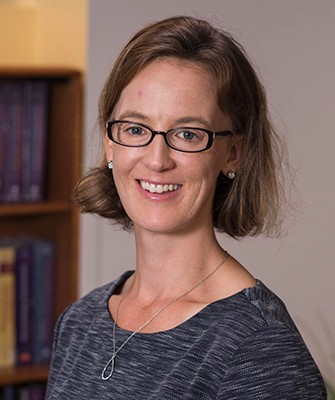On January 1, Massachusetts became the latest state in the nation to grant full-practice authority for nurse practitioners. The stepping stone to this landmark legislation occurred in the early days of the COVID-19 pandemic when Governor Charlie Baker issued an executive order on March 26, 2020, temporarily waiving the physician supervision requirement of NPs—a move that essentially shifted NPs from highly restricted practice to full independence overnight.
Nursing health services researcher Monica O’Reilly-Jacob, an assistant professor in the Connell School of Nursing at Boston College, conducted a survey of NPs in Massachusetts to examine their perception of the impact the temporarily waived state practice restrictions had on their care delivery during the initial surge of COVID-19. O’Reilly-Jacob and co-author Jennifer Perloff, director of the Heller School’s Institute on Healthcare Systems at Brandeis University, have published their findings in the latest issue of Medical Care.

Monica O'Reilly-Jacob
“Better use of the NP workforce is an increasingly popular proposal to address the growing primary care shortage. However, federal, state, and organizational scope of practice policies inhibit NPs from practicing to the full extent of their license and training,” said O’Reilly-Jacob, a family nurse practitioner. “The Massachusetts waiver of NP supervisory requirements granted during the beginning of the pandemic presented a unique opportunity for us to examine if a temporary removal of one layer of restrictions would make a meaningful difference in the day-to-day work of the NPs.”
Their article, “The Effect of Supervision Waivers on Practice: A Survey of Massachusetts Nurse Practitioners during the COVID-19 Pandemic,” showed that a quarter of the nearly 400 NPs who responded found that their work was improved as a result of the waiver of physician oversight.
Psychiatric mental health NPs, compared to those in other NP specialties, were most likely to believe the waiver improved their work. NPs who experienced an increase in working hours during the pandemic surge were also more likely to report a positive effect of the waiver.
O’Reilly-Jacob noted that the vast majority—75 percent—of NPs believed the temporary removal of practice restriction did not perceptibly improve their day-to-day practice.
“Temporary removal of state-level practice barriers alone is not sufficient to achieve immediate full scope of practice for NPs,” concluded O’Reilly-Jacob. “Now that the state layer of restrictions has been removed, we can begin to examine policies at the organizational and payer level that continue to limit NP practice.”
This survey follows a study O’Reilly-Jacob and Perloff conducted with researchers Moaven Razavi (Brandeis University) and Peter Buerhaus (Montana State University) on the value of NP-provided health care which showed that NPs provide less costly care than physicians. This was true for both healthier and sicker patients. The peer-reviewed article, also published by Medical Care, demonstrated that, prior to implementation of the Affordable Care Act, primary care provided by NPs was up to 34 percent less costly than care provided by physicians.
The cost gap between NPs and MDs was biggest for low-risk patients. “Low-risk patients are where primary care providers have the most discretion, and that’s where NPs really shine,” said Perloff.
“COVID-19 has shown us what a valuable and versatile role the NP workforce plays in our fragile healthcare system,” added O’Reilly- Jacob. “Modernizing NP scope of practice across the practice, state, and federal level will optimize the capacity of the NP workforce to contain health care costs and alleviate the primary care shortage well into the future.”
—Kathleen Sullivan | Office of University Communications | February 2021. Material from Brandeis University was used in this article.



